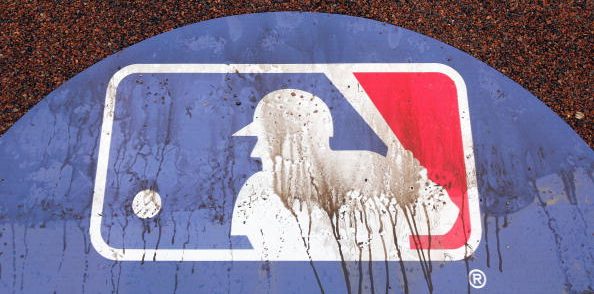For a long time, there’s been a lot of discussion about MLB teams purposefully not spending money, instead chasing better draft picks (from losing more games) amidst prolonged “rebuilds.” That’s become notable with several slow free agent markets, and with executives from rich big-market clubs saying they can’t afford signings, and with not-in-contention teams conducting absolute fire sales. And with the collective bargaining agreement between MLB and the MLB Players’ Association expiring ahead of next season, many have been discussing changes that might help to address the issues here. One proposal is a “salary floor” that every team would have to meet, a concept seen in the NFL, NHL, NBA, and other leagues. And that’s now been included in MLB’s first economic proposal to the MLBPA this year (following a MLBPA proposal in May), as Ken Rosenthal and Evan Drellich of The Athletic wrote Wednesday:
In a face-to-face collective bargaining meeting in Denver on Monday, Major League Baseball made its first proposal covering core economics to the Players Association. The plan included a new tax on team spending, one that would both effectively lower the first luxury-tax threshold in the sport to $180 million, and charge teams who exceed that first mark a higher percentage than they pay today. One trade-off, people briefed on the league’s proposal said, would be a salary minimum of $100 million in the sport.
Money collected from teams paying tax would fund certain club payrolls to the minimum, but details about the mechanism are unclear, including what penalties teams might incur if they do not reach $100 million, or what year the minimum would take effect.
The current tax system includes three spending tiers, the first of which is $210 million. Today, a team that goes over that amount pays a tax of at least 20 percent. In the new system proposed by MLB, the three tiers would still exist, and the new tax would be introduced below them — making for what would function as a four-tier system. Taxation would begin at 25 percent for the teams above $180 million, and the rates would climb from there.
First, the actual proposal here is unlikely to be implemented as currently written. This kind of expanded luxury tax (and lowering of the first luxury tax threshold) is going to take significant pushback from players, and that Athletic piece goes on to note that this particular proposal is being presented as a package deal, so there can’t be a quick agreement to some of it but not all of it. And the particular idea here of using the expanded luxury tax to fund getting other teams to the salary floor has some downsides.
However, it’s notable to see MLB putting forward this idea of a salary floor, and to see them set that floor at $100 million. As per the Cot’s Contracts data from Jeff Euston at Baseball Prospectus that Rosenthal and Drellich cite, seven different MLB teams began 2021 with under $100 million in salaries on their 40-man roster (the figure used for luxury tax calculations). Those are the Detroit Tigers ($97.8 million), Seattle Mariners ($92.3), Tampa Bay Rays ($83.0), Miami Marlins ($78.5), Baltimore Orioles ($76.6), Cincinnati Reds ($63.6), and Pittsburgh Pirates ($62.9).
For the Tigers and Mariners, a boost to $100 million wouldn’t mean much, but that’s a significant salary boost for those other teams. It doesn’t necessarily make them instant contenders for division or league titles, especially depending on how they spend it (and the Rays in particular have shown that they can achieve good results with a smaller payroll, including making the 2020 World Series). But this kind of salary floor might make some of those teams willing to compete for at least some notable free agents, or willing to sign at least a couple of homegrown players to big extensions. And there are some advantages for MLB as a whole from boosting the payrolls of cheap teams; if those teams have at least one or two more notable players than they currently do, that makes them more attractive as opponents for ticket sales, and for local broadcasts, and maybe even for national broadcasts.
As mentioned, this package as a whole seems unlikely to be implemented. And given that it’s only currently being offered as a whole, there may be absolutely nothing that comes from this in the end. But we do often see bargaining sides take some smaller ideas from one proposal or another and work them into an eventual deal. And given that salary floors have worked out pretty well for many other leagues, it wouldn’t be surprising to see one eventually come to MLB in some form. And it’s certainly notable that that’s now been brought up in a MLB proposal.
[The Athletic; top photo of the 2021 MLB Opening Day logo at a Texas Rangers-Kansas City Royals game on April 1 from Denny Medley, USA Today Sports]






